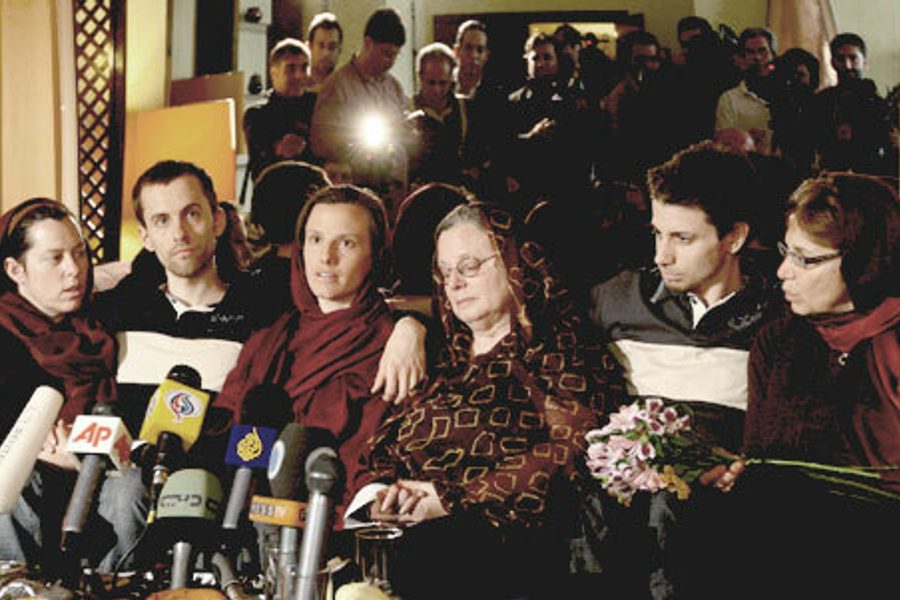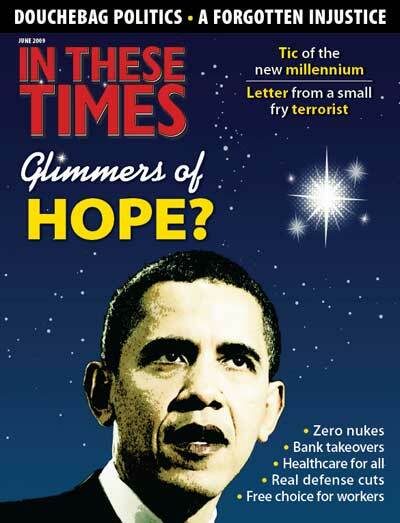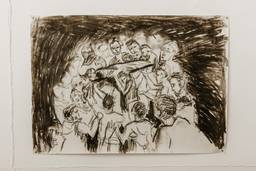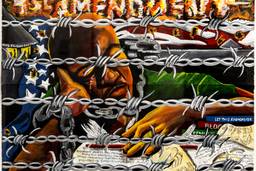
An elementary school curriculum designed by the American Coal Foundation suggests that students learn about the costs and benefits of coal mining by using toothpicks and paper clips to “mine” chocolate chips out of cookies. They also go about “reclaiming” the “land” damaged in the process by tracing the cookies’ outline on graph paper. Costs are to be calculated by the amount of time spent per chip and the expanse of graph paper that needs to be reclaimed.
One of the discussion questions to follow the lesson is: “What do you think are some of the costs associated with mining coal?”
In poet and organizer Mark Nowak’s new book Coal Mountain Elementary, this question is placed on an otherwise blank page. On the adjacent page is a photo from Sago, W. Va., of a sign, in bedraggled removable plastic letters and missing an “i”: “Pray for our mining families.”
On Jan. 2, 2006, an explosion in the Sago mine trapped 13 miners for two days; only one made it out alive. The rescue efforts and release of information to the public were botched and/or intentionally manipulated by the company. The night of Jan. 3, families were given false hope by erroneous media reports that 12 miners were miraculously still alive. Investigations in the wake of the disaster revealed a long history of safety violations and apparent misconduct by mine owner International Coal Group.
“It was devastation heaped upon devastation, tragedy piled upon tragedy,” says Nowak, who got the idea for the book while doing workshops with Sago residents about six weeks after the disaster.
Coal Mountain Elementary is an artful, stark and slightly surreal weave of several narratives that portray the human toll of coal mining on families and communities and the way the industry is embedded in our global society, in part through highly strategic efforts like the American Coal Foundation’s curriculum.
The book is a collage of excerpts from the curriculum, testimony from the Sago disaster, news reports of mining disasters in China, and desolate yet eerily beautiful photos of Sago and of Chinese miners and mines. (The breathtaking Chinese photos are by photojournalist Ian Teh.)
The stranger-than-fiction curriculum prods students to write inspiring stories about mining company towns and teaches how to make “coal flowers” – lumps of coal adorned with paper and fabric held together by congealing ammonia, salt and “laundry bluing,” which the curriculum helpfully advises can be purchased through women’s magazines.
Nowak sees the book as his contribution to the growing debate over – and opposition to – coal’s role as a primary global energy source. Without preaching or delving into the environmental effects that are documented elsewhere, Coal Mountain Elementary shows the inherent danger and violence of the industry, and it quietly celebrates the strength and resilience of miners and their families.
“There probably isn’t another occupation where so many people die at work every day,” notes Nowak, whose blog logs mine accidents around the world. “It’s not a thought most people have when they get in their car to go to work: Will I come home at night? But around the world, not just in China but Zimbabwe, Ukraine, South Africa, it’s a daily occurrence.”
In April, a play based on the book was performed in Pittsburgh and West Virginia. At one performance, Nowak met relatives of a miner killed in Sago who had brought photos of the memorial service. In a region where coal companies still hold an economic and psychological grip over many communities, Nowak said the play was well received, and he hopes it opened some eyes to the global and multi-layered nature of the coal industry. In China, an average nine miners died each day last year, with cover-ups by local bureaucrats common, and family members and journalists bribed or intimidated into staying silent.
“Every time you go to the Family Dollar or Wal-Mart, probably 70 percent of the stuff there was made in China,” Nowak says. “A lot of people know about the terrible working conditions, but most people are so removed from the fact that those plants are powered through electricity from coal. We are ourselves attached to each and every one of these (mining) disasters through the clothes we wear, the things we purchase.”
Explicitly in the curriculum and implicitly in the testimony and news reports included in the book are cost-benefit analyses. One page quotes the curriculum “assessment” of the cookie mining: “What costs or possibilities for profit were not included in this exercise?” The facing page quotes a Sago rescuer who, shaking the dead miners, says he tries “to holler at them, tell them to wake up.” He remembers they had taken the time to lay out a curtain on the floor of what became their death chamber.
“You know, coal miners don’t just sit on the mine floor, they always lay something out. And that’s one of the things that stuck in my mind is, they had done that.”
Kari Lydersen is a Chicago-based journalist, author and assistant professor at Northwestern University, where she leads the investigative specialization at the Medill School of Journalism, Media, Integrated Marketing Communications. Her books include Mayor 1%: Rahm Emanuel and the Rise of Chicago’s 99%.









